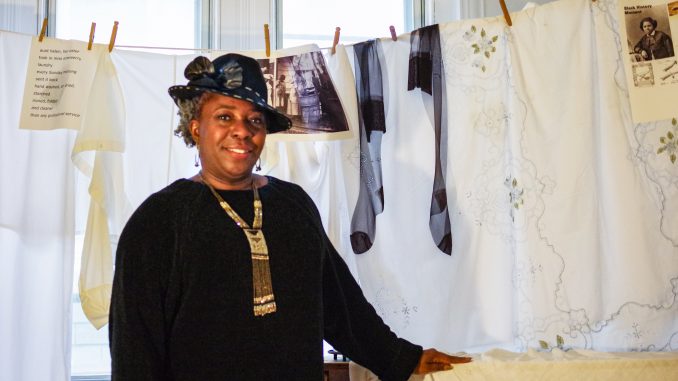
From the outside, only a small sign on the front porch distinguishes the Colored Girls Museum from all the other Victorian houses in Germantown.
Vashti DuBois, the founder and executive director of the museum, turned her family home into a museum to honor the achievements and vision of “ordinary, extraordinary colored girls” in 2015.
“It’s important for us, as human beings, to understand how ordinary we are,” DuBois said. “Just who we are without our degrees, our clothing, our family, our privilege. When you really look at it and attend to it, it is absolutely extraordinary. It’s the looking that allows you to see the extraordinary.”
DuBois became intrigued by the idea of a place “where people can curate an experience” when she was an undergraduate at Wesleyan University in the early 1990s. More than 30 years passed without her making steps toward opening a museum, until her husband died in a car accident three years ago. Then, she said she realized “life is short.”
“I felt like I wanted to do it now,” DuBois said. “I couldn’t wait any longer. … I have something now and I will start with what I have.”
She decided to use her space to celebrate the everyday experiences of Black women.
Last fall, the single-exhibit museum opened “A Good Night’s Sleep,” which highlighted the importance of sleep in reducing stress caused by the effects of racism, social issues and illnesses. On March 5, the museum was decorated to look like an emergency room for “A Good Night’s Sleep Act II: Urgent Care.”
The museum was designed as a “health journey,” DuBois said. The first room is the reception area, filled with the smell of a tobacco-scented candle. The exhibit includes a triage room, exam room and a healing room — a cozy bedroom for “patients,” or museum visitors, to rest.
Stormy Kelsey, a sophomore media studies and production major, went to both exhibits at the museum. On her first visit, she said DuBois immediately greeted her with a hug.
“It was as if she knew me for years,” Kelsey said. “[The museum] makes me nostalgic for something that I have never had. It takes me to some place I have never been, but it feels familiar.”
DuBois said the museum is also a “historical record” of the Black community in Germantown, which shrank after the 2007-08 housing crisis, when many community members lost their homes.
Michael Clemmons is the associate director of workforce development at Temple’s Center for Social Policy and Community Development. He is also a curator at the museum and a long-time friend of DuBois, and works closely with artists to organize their work in the museum. Artists are the foundation for the success of the museum, he said.
Every year, one of the artists is honored for their contribution to the community. On March 26, visitors celebrated one of them: Toni Kersey.
Clemmons described Kersey as the exact definition of an “ordinary, extraordinary colored girl.”
“There were folks that [Kersey] hasn’t seen in 40 years, but they came to see her because of [the ceremony],” Clemmons said. “It’s not just because she’s a great artist, but also because of who she is as a person and who she is to her family and daughter.”
DuBois said she still can’t believe she is living in a museum. She is “constantly in a state of performance,” ready to welcome visitors into her home.
“It’s clear to me that this isn’t a boxy or glassy institute,” she said. “The Colored Girls Museum requires a house. ‘She’ requires that kind of intimacy.”
Quang Do can be reached at quang.duc.do@temple.edu.







Be the first to comment